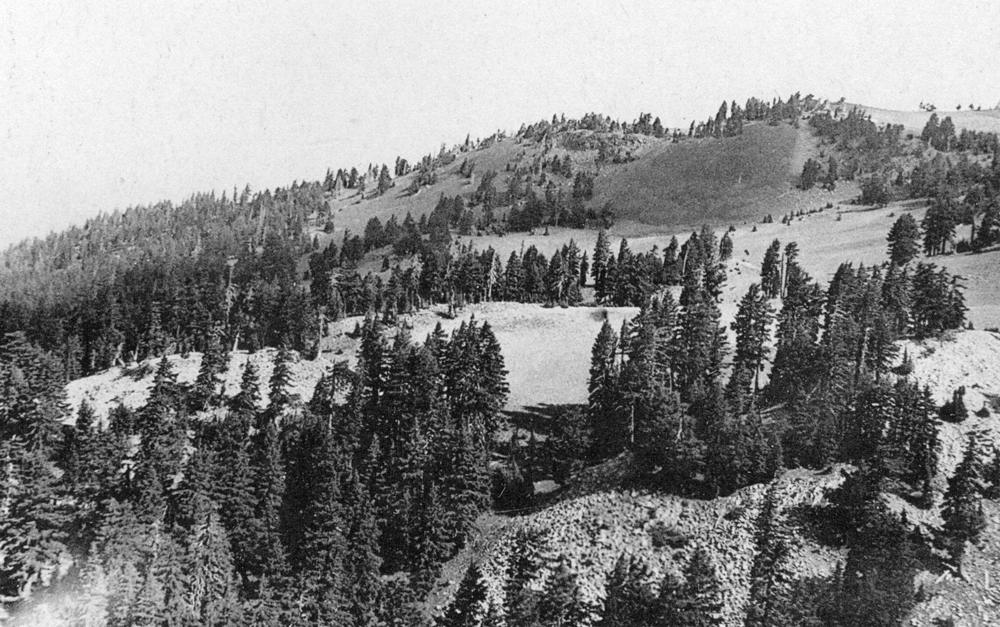The Geology of Crater Lake National Park, OregonWith a reconnaissance of the Cascade Range southward to Mount Shasta by Howell Williams
The Parasitic Scoria Cones of Mount Mazama
The Younger Cones
Forgotten Crater
In 1932, D. LeC. Evans1 called attention to a ruined cone about 1/2 mile west of Hillman Peak which had not previously been described, although it is quite conspicuous from the Rim Road. It is built on a ridge of lava that descends from Hillman Peak and may lie on a radial fissure connected with that cone. This seems all the more likely since it is itself elongated in an east-west direction, measuring approximately 700 yards along its major diameter and about half as much in width (plate 13, figure 2). Along the north and west sides a continuous ridge of cinders marks the crater rim, but on the east the rim has been demolished and on the south it is almost completely buried by a flow of lava from the crater. Among the cinders are a few ropy bombs up to 2 feet in length, but small lapilli predominate. Angular lithic fragments are widespread. Especially conspicuous are the large glacial boulders on the northern rim, one of which measures 8 feet across. Whether these were blown from an underlying layer of drift or indicate that ice formerly covered the cone is difficult to say.
|
Plate 13. Fig. 2. Forgotten Crater, a denuded cinder cone west of Hillman Peak, looking north. A short lava flow can be seen just below and outside the crater rim. A much larger flow escaped from the west (left) base of the cone. Part of it forms the wooded ridge at the extreme edge of the picture. |
Within the rim of cinders lie two small craters, the eastern of which is a funnel-shaped explosion pit about 50 feet deep, probably caused by a phreatic eruption. The other crater is no more than a shallow, arcuate depression.
After the explosive activity at Forgotten Crater had come to an end, composite flows of well banded, almost pumiceous, glassy lava, crowded with crystalline inclusions, broke through the crater wall on the south side and poured a short distance beyond. A much more voluminous flow escaped from fissures at the western base of the cone and spread for a mile in that direction, ending in a series of branching tongues. Near the source this flow shows the same pronounced banding of dark, basic lava and paler, more acid material as the shorter flows on the south side of the cone, but farther away it is entirely composed of black lava. To judge by the rough, blocky surface and the steepness of the margins, this flow is probably younger than any other on the outer slope of Mount Mazama. Evans was so struck by the youthful appearance of Forgotten Crater that he ventured the opinion that it might be contemporaneous with Wizard Island and therefore be younger than the caldera itself. The presence of a light sprinkle of pumice on both the cone and the flows indicates, however, that this cannot be the case.
***previous*** — ***next***


